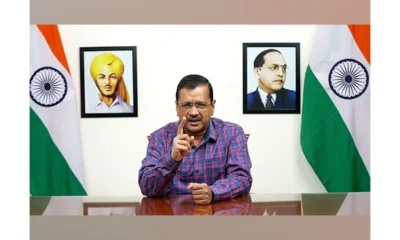[vc_row][vc_column][vc_column_text] Or why I fell out of love with movies
Or why I fell out of love with movies
By Khalid Mohamed
There’s something majorly amiss. That tribal rite of going to the movies just isn’t the same anymore. Never mind, the fancy price of tickets or the 200 bucks for pops of corn.
It’s just that the romance of submitting myself to the wonderful people and their conflicts on the screen just doesn’t make me laugh… or cry… with the same purity of feelings today.
BBC reviewer Alistair Cooke, once upon a time the most influential voice on cinema, had said, “A film critic should be someone who can’t stay away from films or a man who never goes at all. I leave you to guess as to which class I belong.”
Today, I find myself as someone who’s in between, a cinemaholic who hits the bar only on a Friday. Not so long ago, it used to be 7 x 7 a week.
Now I brooded over that (a bit) and arrived at a few prime reasons for losing my ‘religion’, or for diminishing my devotion:
Where are the technocrats? Even a rankly lousy film would have some redeeming feature. Ravikant Nagaich’s Farz, Suraksha and oodles of espionage thrillers would be as believable as a Rs 25 note. Yet Nagaich’s technical inventiveness was mind-blasting. Mukul S Anand would hack out predictable Bachchan extravaganzas but again, stylewise he was the asli bhai of all the directors in the showtown of the 1970s. His screenplays were messy but his direction, wah-wah. Today where are the comparable technocrats? Sanjay F Gupta? Don’t make me laugh.[/vc_column_text][vc_column_text]Just not interested: An upcoming turnip can be smelt from weeks ahead. There was no earthly reason—except in the strict line of reviewing duty—to sample Mohenjo Daro once its promos promised the misshapen things to come. And though, I’m a major fan of B-graders—which often have more heart than the biggies—I can no longer drag myself to the Sunny Leone twists-and-grinders.
Time time ki baat hai: The movies may have become briefer and the number of songs has reduced drastically supplanted as they are in the background score. A film’s finale of fisticuffs, shoot-outs and miscellaneous showdowns doesn’t stretch on for a millennium. But for the super big-budget movies, others wrap up in two hours-flat. So why do I still keep looking at my wrist watch, eyeing the exit door? To think Love in Simla boasted of 11 songs, and it’s a pleasure even on DVD. Today, it could be Love in Honolulu with just one song and three remixes, but I’d bin it after half a viewing.
Crores roar? It’s all about loving your Rs 100 crores. But huh, whenever, Whenever I’ve tracked a mega-blockbuster in its second-week runs, the audience has been as scant as a receding hairline. Doesn’t feel quite right about watching a humongous hit with just a couple of necking couples in the last row. Feels lonely.
Multiplexes, a mixed blessing: So the clarity of the projection and sound are infinitely superior to the surviving single screen movie halls. But at the plexes, the images can be dingy and the full-on sound can drive you to an ENT specialist. Ouchhh. Believe it or yelp, mice leap through the aisles even in the swishiest of the plexes.[/vc_column_text][vc_column_text]Gourmet dinners, no thank you: At the prohibitively-costly, souped-up multiplexes. Take Delhi’s Director’s Cut auditorium, butlers will fetch you sushi and desi trays. Now how about those viewers who just want to watch the movie, without burping and clattering about with forks and knives? I must have annoyed countless multi-waiters, on pleading, “I can’t see the screen. You’re not invisible.” Post-demonetisation, the dinners are paid for by credit and debit cards, an intricate chore subtracting that simple old pleasure of just watching a movie without making it a dining-out experience. Cell phone conversations, SMS’es and WhatsApping on blindingly bright cell screens, aah no point protesting any more, is there?
3-D, no thanks: All my friends who are assorted nuts about the movies, agree. Watching a movie with heavy glasses isn’t our idea of fun. Even on becoming Zen about the glasses, the picture quality is hazy and lacks lustre. There was no choice but to go through the drill for Avatar, Tintin, Spiderman and practically every cartoon flick from the Hollywood eye-zapping clinic.
Result: there’s something majorly amiss about going to the movies. Am I alone in thinking this way? Hope not.[/vc_column_text][/vc_column][/vc_row]


 Latest world news11 hours ago
Latest world news11 hours ago
 India News14 hours ago
India News14 hours ago
 India News13 hours ago
India News13 hours ago
 India News12 hours ago
India News12 hours ago
 India News15 hours ago
India News15 hours ago
 Or why I fell out of love with movies
Or why I fell out of love with movies














